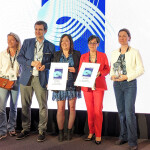The decision by the Monterey Bay Aquarium’s Seafood Watch program to upgrade the status of some Chilean sea bass (Dissostichus eleginoides) fisheries, and Antarctic toothfish (Dissostichus mawsoni) to Best Choice or Good Alternative has buoyed the spirits of those who have long dealt with this species, and see opportunities for expanding sales of the fish, also known as Patagonian toothfish.
“This has been a very special year,” says Michael DellaGrotta, president of Kendell Seafood Imports, and one of the three U.S. companies that is an associate member of the Coalition of Legal Toothfish Operators (COLTO). “It has been a banner year for the legality, traceability and acceptance of this species.”
In April, Seafood Watch announced its new rating, moving several Chilean sea bass fisheries off the avoid list. In a prepared statement at the time, Tom Pickerell, senior science manager at Seafood Watch, said the assessment took almost a year. “While some may consider a recommendation to buy toothfish somewhat controversial, we are confident in our analyses and the industry has demonstrated that it is possible to harvest this species in a responsible manner,” said Pickerell.
According to COLTO, 80 percent of the total allowable catch (TAC) for 2012/2013 is caught by COLTO members on 40 vessels. The TAC for that period is 24,789 metric tons (MT). Chilean sea bass is harvested from the cold waters around Australia, Chile, France, South Africa and Argentina. Part of the fishery is managed by the Commission for the Conservation of Antarctic Marine Living Resources (CCAMLR) with the rest, accounting for 9,430 MT of the TAC, outside the CCAMLR area.
Click here to read the full story that ran in the June issue of SeaFood Business >






